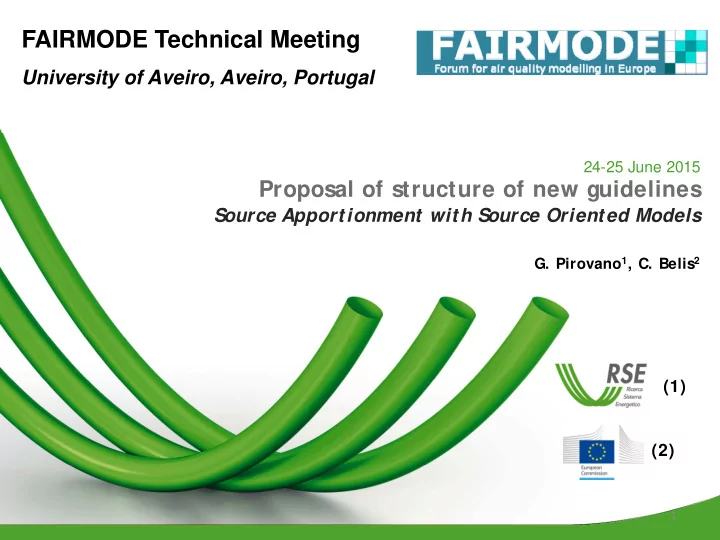

FAIRMODE Technical Meeting University of Aveiro, Aveiro, Portugal 24-25 June 2015 Proposal of structure of new guidelines Source Apportionment with Source Oriented Models G. Pirovano 1 , C. Belis 2 (1) (2) 1
Table of contents 1. Introduction to Source Apportionment with Source Oriented Models General notes on the use of Air Quality models for S.A. • • Preliminary introduction of some key concepts: linear effects, zero ‐ out modelling, tagged species approach 2. Source Apportionment protocol for source oriented models Only PM species? 2.1 Problem framework • Area of study, kind of sources, kind of pollutants 2.2 Emissions • Emission inventories and other requested data • Speciation profiles: a key aspect Actually, this is a key aspect in case of SM and RM comparison either when the focus is on specific pollutants. It is less relevant for PM bulk mass 2 Guido Pirovano Aveiro ‐ June 24 ‐ 25, 2015
Table of contents 2.3 Base Case (or Reference) simulation The base case simulation is exactly the • Input definition same as a traditional air quality evaluation. Model validation • Could we could refer to PM modeling • … guidance already published in FAIRMODE? 2.4 Source apportionment • Zero out modelling: approach, weaknesses and strengths • Tagged species modelling: approach (PSAT LOTOS, PSAT CAMx, ISAM CMAQ, others?), weaknesses and strengths • Category sources and Area sources 3. Comparing Source and Receptor oriented modelling • Introduction: the need for source apportionment “validation” Methods: • Only a description of the different o Source definition approaches? Examples of applications? o Mass closure verification o Source ranking and estimates o Temporal correlation and exceedances analysis o Specific sources analysis o Secondary pollutants o Use of tracers 3 o …… Guido Pirovano Aveiro ‐ June 24 ‐ 25, 2015
Recommend
More recommend